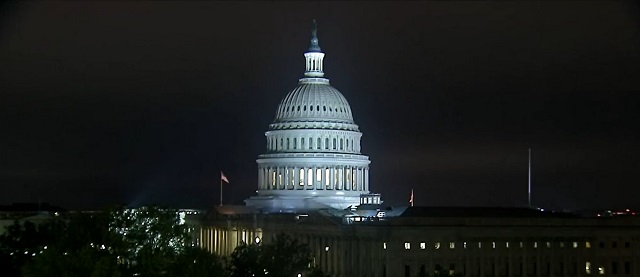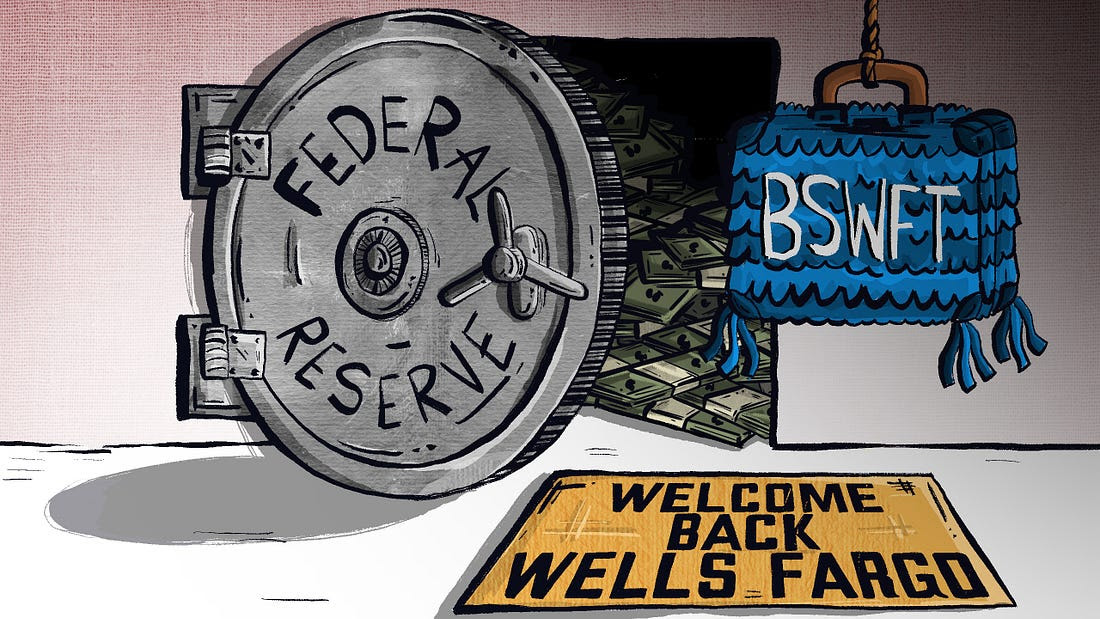Business
Companies Are Getting Back To Business And Backing Away From DEI

 From the Daily Caller News Foundation
From the Daily Caller News Foundation
Classic American companies like John Deere, Harley Davidson and Tractor Supply Co. are finally reevaluating Diversity, Equity, and Inclusion (DEI) initiatives. They are realizing that their consumers, many from rural, midwestern and working-class communities, don’t care for the DEI practices of corporate elites. They just want good service, reliable tractors and badass motorcycles.
The about-face is especially timely as the Supreme Court’s 2023 affirmative action decision prohibiting race-based college admissions has increased scrutiny of private sector DEI practices. This new legal climate, combined with the discovery of problematic DEI programs at major American companies, means that corporations are at long last feeling significant pressure to prioritize excellence and efficiency over faddish diversity metrics.
Companies operating in the free market have one purpose: to provide quality goods and services to consumers in order to make a profit. For too long, much of corporate America has focused on virtue signaling to appease the left’s cultural mandates. Now, business incentives are forcing a return to the bottom line.
The change began in June when conservative commentator Robby Starbuck took to social media to expose companies masquerading as all-American brands with traditional values. He first exposed Tractor Supply’s DEI practices and announced that he would be investigating a list of other companies considered exemplars of Americana.
In response, Tractor Supply customers began boycotting the company, resulting in an 8% decrease in its stock price (a $2.8 billion market value loss) over five days. This led Tractor Supply to announce later that month the termination of its DEI programming. The company promised to stop submitting data for the Human Rights Campaign’s Corporate Equality Index and withdrew sponsorship of LGBTQ+ pride events and voting campaigns, calling them “nonbusiness activities.”
Starbuck’s later exposure of John Deere’s DEI policies also caused the company to issue a statement announcing major cutbacks to their DEI programs. Harley Davidson, Jack Daniels and Lowe’s followed suit, preemptively terminating their DEI programs and standards.
All of these companies should be commended for abandoning excessive DEI and getting back to business.
Now, instead of requiring costly, time-intensive programs to prove their liberal bona fides, they can focus on delivering results for their customers. Free from worry about optics and bureaucratic compliance, they can hire the most qualified employees and let them rise to the top.
But these decisions are not without their naysayers. DEI proponents have labeled these moves as bullying from far-right extremists and claim that terminating these policies will encourage gender and race discrimination in the workplace.
This hysteria is unwarranted and relies on the absurd claim that without DEI standards, there can be no equality, inclusion or respect in the workplace. Of course, it is crucial that businesses cultivate a culture of respect and dignity. Employees should be educated on their protections and duties regarding civil rights and basic civility in the workplace. All of the companies reversing on DEI have remained committed to fostering respectful, safe cultures for their employees.
In fact, too much corporate DEI can wreak havoc on a company’s morale. In many cases, it can result in scapegoating certain groups of people for grievous wrongs none of them had a hand in committing. It can also lead to damaging intellectual conformity and groupthink. DEI hiring quotas, in particular, can lead to serious legal risk. All of this results in the complete opposite of DEI’s purported goals. Instead, it increases workplace disunity and harms true diversity.
Ultimately, the DEI policies at these classic American companies have proven to only burden corporations, frustrate employees and confuse customers. Companies should prioritize producing better quality products, lowering prices, and offering attractive wages and benefits for all employees, instead of pouring time and money into ineffective policies that do not represent the American values of their customer base. So long, discrimination disguised as diversity.
Devon Westhill is the president and general counsel for the Center for Equal Opportunity.
Automotive
Federal government should swiftly axe foolish EV mandate

From the Fraser Institute
Two recent events exemplify the fundamental irrationality that is Canada’s electric vehicle (EV) policy.
First, the Carney government re-committed to Justin Trudeau’s EV transition mandate that by 2035 all (that’s 100 per cent) of new car sales in Canada consist of “zero emission vehicles” including battery EVs, plug-in hybrid EVs and fuel-cell powered vehicles (which are virtually non-existent in today’s market). This policy has been a foolish idea since inception. The mass of car-buyers in Canada showed little desire to buy them in 2022, when the government announced the plan, and they still don’t want them.
Second, President Trump’s “Big Beautiful” budget bill has slashed taxpayer subsidies for buying new and used EVs, ended federal support for EV charging stations, and limited the ability of states to use fuel standards to force EVs onto the sales lot. Of course, Canada should not craft policy to simply match U.S. policy, but in light of policy changes south of the border Canadian policymakers would be wise to give their own EV policies a rethink.
And in this case, a rethink—that is, scrapping Ottawa’s mandate—would only benefit most Canadians. Indeed, most Canadians disapprove of the mandate; most do not want to buy EVs; most can’t afford to buy EVs (which are more expensive than traditional internal combustion vehicles and more expensive to insure and repair); and if they do manage to swing the cost of an EV, most will likely find it difficult to find public charging stations.
Also, consider this. Globally, the mining sector likely lacks the ability to keep up with the supply of metals needed to produce EVs and satisfy government mandates like we have in Canada, potentially further driving up production costs and ultimately sticker prices.
Finally, if you’re worried about losing the climate and environmental benefits of an EV transition, you should, well, not worry that much. The benefits of vehicle electrification for climate/environmental risk reduction have been oversold. In some circumstances EVs can help reduce GHG emissions—in others, they can make them worse. It depends on the fuel used to generate electricity used to charge them. And EVs have environmental negatives of their own—their fancy tires cause a lot of fine particulate pollution, one of the more harmful types of air pollution that can affect our health. And when they burst into flames (which they do with disturbing regularity) they spew toxic metals and plastics into the air with abandon.
So, to sum up in point form. Prime Minister Carney’s government has re-upped its commitment to the Trudeau-era 2035 EV mandate even while Canadians have shown for years that most don’t want to buy them. EVs don’t provide meaningful environmental benefits. They represent the worst of public policy (picking winning or losing technologies in mass markets). They are unjust (tax-robbing people who can’t afford them to subsidize those who can). And taxpayer-funded “investments” in EVs and EV-battery technology will likely be wasted in light of the diminishing U.S. market for Canadian EV tech.
If ever there was a policy so justifiably axed on its failed merits, it’s Ottawa’s EV mandate. Hopefully, the pragmatists we’ve heard much about since Carney’s election victory will acknowledge EV reality.
Business
Prime minister can make good on campaign promise by reforming Canada Health Act

From the Fraser Institute
While running for the job of leading the country, Prime Minister Carney promised to defend the Canada Health Act (CHA) and build a health-care system Canadians can be proud of. Unfortunately, to have any hope of accomplishing the latter promise, he must break the former and reform the CHA.
As long as Ottawa upholds and maintains the CHA in its current form, Canadians will not have a timely, accessible and high-quality universal health-care system they can be proud of.
Consider for a moment the remarkably poor state of health care in Canada today. According to international comparisons of universal health-care systems, Canadians endure some of the lowest access to physicians, medical technologies and hospital beds in the developed world, and wait in queues for health care that routinely rank among the longest in the developed world. This is all happening despite Canadians paying for one of the developed world’s most expensive universal-access health-care systems.
None of this is new. Canada’s poor ranking in the availability of services—despite high spending—reaches back at least two decades. And wait times for health care have nearly tripled since the early 1990s. Back then, in 1993, Canadians could expect to wait 9.3 weeks for medical treatment after GP referral compared to 30 weeks in 2024.
But fortunately, we can find the solutions to our health-care woes in other countries such as Germany, Switzerland, the Netherlands and Australia, which all provide more timely access to quality universal care. Every one of these countries requires patient cost-sharing for physician and hospital services, and allows private competition in the delivery of universally accessible services with money following patients to hospitals and surgical clinics. And all these countries allow private purchases of health care, as this reduces the burden on the publicly-funded system and creates a valuable pressure valve for it.
And this brings us back to the CHA, which contains the federal government’s requirements for provincial policymaking. To receive their full federal cash transfers for health care from Ottawa (totalling nearly $55 billion in 2025/26) provinces must abide by CHA rules and regulations.
And therein lies the rub—the CHA expressly disallows requiring patients to share the cost of treatment while the CHA’s often vaguely defined terms and conditions have been used by federal governments to discourage a larger role for the private sector in the delivery of health-care services.
Clearly, it’s time for Ottawa’s approach to reflect a more contemporary understanding of how to structure a truly world-class universal health-care system.
Prime Minister Carney can begin by learning from the federal government’s own welfare reforms in the 1990s, which reduced federal transfers and allowed provinces more flexibility with policymaking. The resulting period of provincial policy innovation reduced welfare dependency and government spending on social assistance (i.e. savings for taxpayers). When Ottawa stepped back and allowed the provinces to vary policy to their unique circumstances, Canadians got improved outcomes for fewer dollars.
We need that same approach for health care today, and it begins with the federal government reforming the CHA to expressly allow provinces the ability to explore alternate policy approaches, while maintaining the foundational principles of universality.
Next, the Carney government should either hold cash transfers for health care constant (in nominal terms), reduce them or eliminate them entirely with a concordant reduction in federal taxes. By reducing (or eliminating) the pool of cash tied to the strings of the CHA, provinces would have greater freedom to pursue reform policies they consider to be in the best interests of their residents without federal intervention.
After more than four decades of effectively mandating failing health policy, it’s high time to remove ambiguity and minimize uncertainty—and the potential for politically motivated interpretations—in the CHA. If Prime Minister Carney wants Canadians to finally have a world-class health-care system then can be proud of, he should allow the provinces to choose their own set of universal health-care policies. The first step is to fix, rather than defend, the 40-year-old legislation holding the provinces back.
-

 International2 days ago
International2 days agoChicago suburb purchases childhood home of Pope Leo XIV
-

 Daily Caller2 days ago
Daily Caller2 days agoBlackouts Coming If America Continues With Biden-Era Green Frenzy, Trump Admin Warns
-

 Daily Caller2 days ago
Daily Caller2 days ago‘I Know How These People Operate’: Fmr CIA Officer Calls BS On FBI’s New Epstein Intel
-

 Daily Caller15 hours ago
Daily Caller15 hours agoUSAID Quietly Sent Thousands Of Viruses To Chinese Military-Linked Biolab
-

 Addictions15 hours ago
Addictions15 hours ago‘Over and over until they die’: Drug crisis pushes first responders to the brink
-

 Business1 day ago
Business1 day agoPrime minister can make good on campaign promise by reforming Canada Health Act
-

 Automotive12 hours ago
Automotive12 hours agoFederal government should swiftly axe foolish EV mandate
-

 Alberta12 hours ago
Alberta12 hours ago‘Far too serious for such uninformed, careless journalism’: Complaint filed against Globe and Mail article challenging Alberta’s gender surgery law







